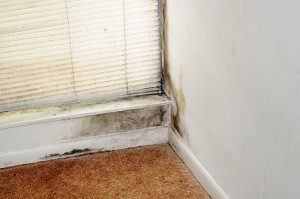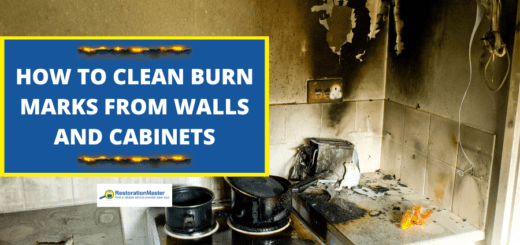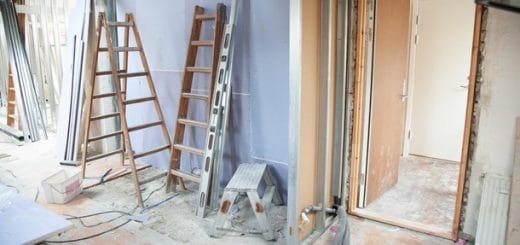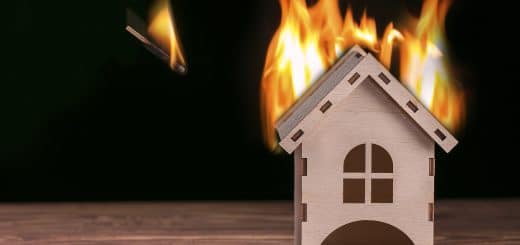Situations to Avoid DIY Mold Removal
The sight of moldMold is a type of fungus that grows in damp or humid conditi... More is one of the last things that you want to see in your home. MoldMold is a type of fungus that grows in damp or humid conditi... More growth is ugly, damaging to your home, and dangerous for your health. The other problem with moldMold is a type of fungus that grows in damp or humid conditi... More is that it is very difficult to remove without the right equipment and cleaning products. MoldMold is a type of fungus that grows in damp or humid conditi... More colonies form in homes when the sporesSpores are microscopic reproductive units of fungi or mold t... More that are naturally in the air find an environment that provides it with a food source and moisture source. The surfaces it grows on like wood and drywall become the food source for moldMold is a type of fungus that grows in damp or humid conditi... More and as a result, the growth penetrates deep into these porousPorous describes a material that contains small openings or ... More surfaces. Household cleaners are generally not strong enough to completely remove moldMold is a type of fungus that grows in damp or humid conditi... More and improper cleaning will cause the moldMold is a type of fungus that grows in damp or humid conditi... More to disperse its sporesSpores are microscopic reproductive units of fungi or mold t... More, spreading the growth and increasing the risk of health effects.
There are some scenarios in which DIY moldMold is a type of fungus that grows in damp or humid conditi... More growth is effective. If the moldMold is a type of fungus that grows in damp or humid conditi... More growth is minor and only covers a small area, you can treat the affected surfaces with white vinegar. Vinegar is the most effective household remedy for cleaning moldMold is a type of fungus that grows in damp or humid conditi... More because it penetrates the affected surfaces to kill the moldMold is a type of fungus that grows in damp or humid conditi... More membrane. However, there are many more scenarios involving moldMold is a type of fungus that grows in damp or humid conditi... More in which you must call a professional for mold remediation. If you experience any of the following situations in your home, do not attempt DIY mold removal and instead call a professional.
Mold Growth Over a Large Area

You must call professionals for serious moldMold is a type of fungus that grows in damp or humid conditi... More growth.
Attempting to remove moldMold is a type of fungus that grows in damp or humid conditi... More growth that covers a large area is dangerous and ineffective without the proper training and equipment. The EPA defines a “large area” regarding moldMold is a type of fungus that grows in damp or humid conditi... More growth as an area bigger than 3 feet by 3 feet, or just under 10 square feet. If the moldMold is a type of fungus that grows in damp or humid conditi... More growth in your home covers an area that is smaller than 10 square feet, you can attempt DIY mold removal methods. Removing moldMold is a type of fungus that grows in damp or humid conditi... More growth that covers a larger area is difficult and disturbing the moldMold is a type of fungus that grows in damp or humid conditi... More growth with improper cleaning methods will cause it to disperse its sporesSpores are microscopic reproductive units of fungi or mold t... More.
Mold Growth in the Air Ducts
MoldMold is a type of fungus that grows in damp or humid conditi... More can grow literally anywhere in your home, including inside your air ducts. Condensation builds up within the air ducts and on component parts of the HVAC system and this moisture can trigger moldMold is a type of fungus that grows in damp or humid conditi... More growth. Having moldMold is a type of fungus that grows in damp or humid conditi... More in your HVAC system is dangerous because the system will disperse the moldMold is a type of fungus that grows in damp or humid conditi... More sporesSpores are microscopic reproductive units of fungi or mold t... More throughout your home when it runs the heating and cooling. If there is moldMold is a type of fungus that grows in damp or humid conditi... More in your air ducts, stop running your heating and cooling and call a mold removal professional right away that has the right equipment to get into your HVAC system and remove the moldMold is a type of fungus that grows in damp or humid conditi... More.
Mold Growth from Black Water Damage
Black water refers to water from sewer backups, toilet overflows, and floodingFlooding is the overflow or accumulation of water in areas t... More from rivers and streams that consist of dangerous bacteria and other toxins. If you experience water damage from black water in your home, it is very important to avoid any contact with the water and call a professional. The moldMold is a type of fungus that grows in damp or humid conditi... More that forms from black water damage is just as dangerous and should be cleaned up by a professional as well, regardless of what size area it covers.
Mold Growth on Wood Surfaces
Wood surfaces are commonly affected by moldMold is a type of fungus that grows in damp or humid conditi... More colonies because the cellulose found in wood acts as a food source for the moldMold is a type of fungus that grows in damp or humid conditi... More. Because of this, moldMold is a type of fungus that grows in damp or humid conditi... More can cause serious damage to wooden surfaces and objects. If the wood surfaces and objects affected by moldMold is a type of fungus that grows in damp or humid conditi... More cannot be removed, then you must have a professional treat them to prevent serious structural damage.
Fear of Health Issues
The health issues associated with moldMold is a type of fungus that grows in damp or humid conditi... More are well known. Attempting to clean up any amount of moldMold is a type of fungus that grows in damp or humid conditi... More growth increases your risk of experiencing negative health effects. If you would rather not take this risk, just call a professional right away who can effectively isolate the moldMold is a type of fungus that grows in damp or humid conditi... More growth and reduce the risk of negative health effects.
MoldMold is a type of fungus that grows in damp or humid conditi... More growth is a potentially dangerous and complicated issue and DIY moldMold is a type of fungus that grows in damp or humid conditi... More removal methods are typically ineffective because of this. Contacting a professional will not only ensure that the moldMold is a type of fungus that grows in damp or humid conditi... More is removed safely, but also that every bit of moldMold is a type of fungus that grows in damp or humid conditi... More is uncovered through testing. When you remove moldMold is a type of fungus that grows in damp or humid conditi... More yourself, there may be hidden moldMold is a type of fungus that grows in damp or humid conditi... More in your home that you cannot detect. Mold remediation professionals use advanced testing equipment to find moldMold is a type of fungus that grows in damp or humid conditi... More growth in hidden areas such as behind walls and ceilings. DIY moldMold is a type of fungus that grows in damp or humid conditi... More removal may be an option in the mildest cases of moldMold is a type of fungus that grows in damp or humid conditi... More growth, but in most cases, you are much better off leaving this to the professionals.












